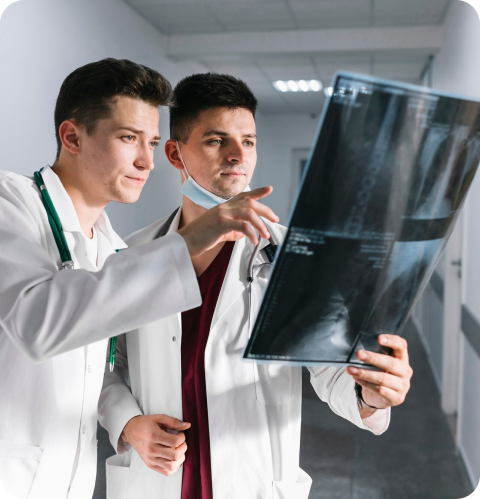Advancements in technology have revolutionized healthcare, and orthopedic care is no exception. Imaging tools play a role in an orthopedic surgeon’s diagnosis, offering insights that enable precise assessments and effective treatment plans. For patients seeking clarity on their orthopedic conditions, it can be helpful to explore how an orthopedic surgeon can use these tools to offer a way to understand a medical situation.
What is Orthopedic Imaging?
Orthopedic imaging refers to the use of advanced technologies like X-rays, MRIs, and CT scans to capture highly detailed images of bones, joints, and soft tissues. These images visually represent the structural condition, which physicians use to identify injuries, degenerative diseases, or abnormalities within the musculoskeletal system. This non-invasive tool enables diagnosis and serves as a powerful educational resource, offering patients a clear visual understanding of their orthopedic issues with the help of an orthopedic surgeon.
What are the Benefits of Imaging for Orthopedic Patients?
Imaging enhances the entire diagnostic and treatment process. These benefits further highlight its role in orthopedic care:
- Improved Understanding: Imaging helps bring clarity to complex orthopedic conditions by allowing patients to see detailed visuals of injuries or conditions affecting their mobility.
- Non-Invasive Tracking: Monitoring progress is necessary in orthopedic care. Imaging technology offers patients a safe, repeatable method to track recovery without physical examinations or invasive procedures.
- Educational Value: Patients can access resources like annotated imaging results or physician-led explanations of the scans, helping to deepen knowledge about their condition.
- Enhanced Dialogue: Detailed imaging provides patients with tangible points of reference, improving doctor–patient communication during consultations or follow-up care.
What Are the Popular Imaging Techniques in Orthopedics?
Orthopedic Surgeons rely on several imaging modalities, depending on the nature of the condition. Understanding the strengths of these tools gives patients a stronger appreciation of their role:
- X-Rays: X-rays are one of the most common imaging tools in orthopedics. They effectively show bone fractures, misalignments, and joint abnormalities, such as arthritis. The rapid results make X-rays an ideal choice for initial diagnosis.
- Magnetic Resonance Imaging (MRI): MRIs provide detailed insights into soft tissues, making them a suitable tool for diagnosing ligament damage, tendon injuries, and cartilage issues. With this imaging solution, doctors can look beyond bones to examine surrounding structures.
- CT Scans: For more intricate imaging, CT scans combine X-rays with computerized processing to create cross-sectional images. These scans are valuable in assessing complex fractures or bone disorders that require thorough analysis.
- Ultrasound Imaging: Orthopedic applications of ultrasound are growing. This technology assists in evaluating superficial soft tissue injuries, such as sprains or rotator cuff tears, and can also guide certain procedures, like injections.
How Can Imaging Be Leveraged in Orthopedic Care?
Patients can get the most out of imaging by following simple steps. First, talk with your orthopedic surgeon to choose the best imaging option. Understanding the process can also help ease concerns and improve your experience. Ask your provider how the imaging works and how the results will guide your care. Once the imaging is done, request a clear explanation of the results. Visuals can help your provider explain your condition, allowing you to make informed treatment decisions.
Schedule Your Appointment Today With an Orthopedic Surgeon
Imaging technologies are sources of information for orthopedic conditions, transforming static diagnoses into well-rounded patient experiences. They go beyond simply offering diagnostic accuracy; they enhance patient understanding, enable tracking of recovery, and improve communication with healthcare providers. To further explore how imaging benefits orthopedic care, consult with experts who can guide you through diagnosis and treatment options.
- TimesHealthMag Fitness Workouts For Women – Burn Fat & Build Strength!
- Exploring the Essential Tools Behind Today’s Advanced Dental Procedures
- How To Choose the Right Gastroenterologist for Your Needs
- Exploring the Role of Stem Cell Injections in Regenerative Medicine
- Exercises to Relieve Elbow Pain and Improve Flexibility


Leave a Reply